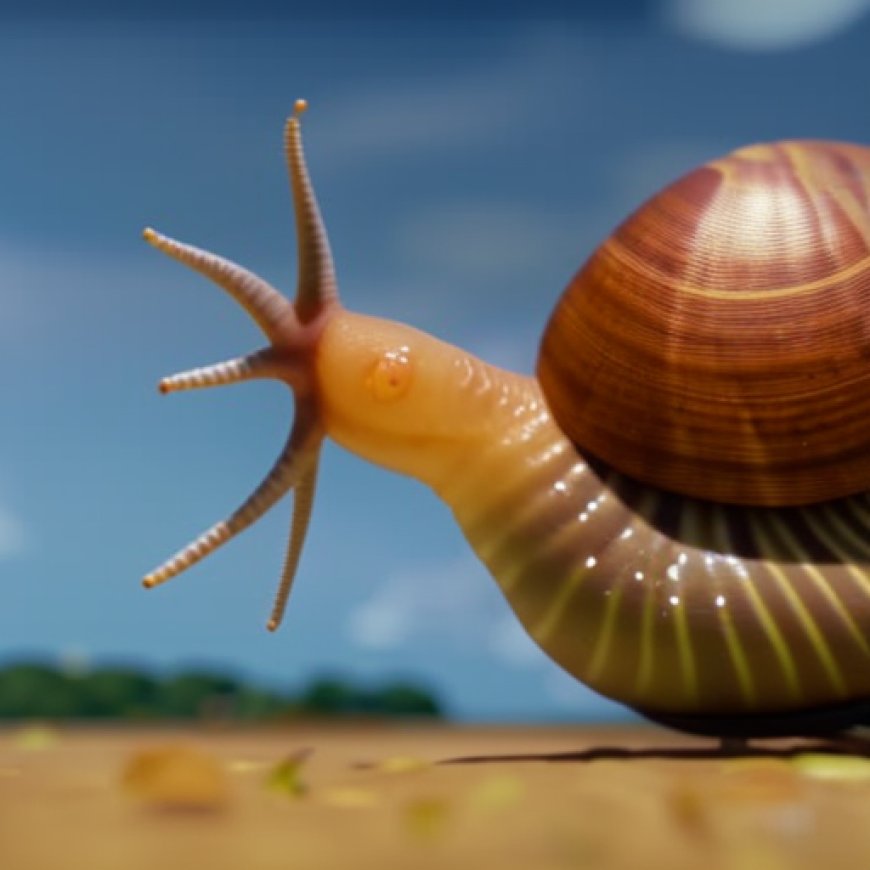Rare Alabama Snail Proposed for Endangered Species Protections
Rare Alabama Snail Proposed for Endangered Species Protections Center for Biological Diversity


BIRMINGHAM, Ala. – U.S. Fish and Wildlife Service Proposes Endangered Status for Oblong Rocksnail

Following seven years of advocacy by the Center for Biological Diversity, the U.S. Fish and Wildlife Service today proposed to protect the oblong rocksnail as endangered. The rocksnail was previously considered extinct until 2011, and today only one small population in Alabama remains.
The Importance of Sustainable Development Goals (SDGs)
- Goal 14: Life Below Water
- Goal 15: Life on Land
Background Information
- The oblong rocksnail is endemic to the Cahaba River, which flows 180 miles from metropolitan Birmingham through central Alabama.
- Today, the rocksnails only inhabit five miles of river.
- The species had not been seen for 70 years and was declared extinct in 2000 until it was rediscovered in 2011.
Proposed Protection and Challenges
“I’m so relieved that we have a second chance to save this unique snail,” said Will Harlan, a senior scientist at the Center. “We almost lost the little oblong rocksnail forever. We can prevent it from going extinct and improve the health of the Cahaba River which it needs to survive.”
- The rare snail was nearly driven extinct in the last century due to water pollution and habitat degradation.
- The oblong rocksnails live downstream from municipal wastewater facilities, industrial facilities, and coal mines which add metals, hydrocarbons, pesticides, and other potentially harmful contaminants to the Cahaba River.
- Two major oil and gas transmission lines cross the Cahaba River near known oblong rocksnail habitat. The Pipeline and Hazardous Materials Safety Administration has designated this portion of the Cahaba River as a high-risk area if there are leaks or spills of hazardous pollutants.
- Oblong rocksnails are also threatened by climate change. During droughts, nearly all the flow of the Cahaba River can disappear. During floods, wastewater spills into the Cahaba and exposes oblong rocksnails to even more toxic contaminants.
Conservation Efforts and Impact
In 2016, the Center petitioned to protect the oblong rocksnail under the Endangered Species Act. Oblong rocksnails are nickel-sized freshwater snails that keep rivers clean by grazing on algae and they serve as food sources for fish and crayfish. Underneath their brown-striped shells, oblong rocksnails have bright yellow bodies with black bands. They shelter beneath flat boulders and graze on algae in clean, silt-free rivers.
The Cahaba River and its Significance
The Cahaba River is the longest free-flowing river in Alabama and is one of the most biologically diverse in the country. It supports 12 threatened and endangered species.
Conclusion
“Safeguarding the oblong rocksnail will also help protect drinking water for Alabamans and some of the most important aquatic diversity on the planet,” says Harlan. “By protecting this snail, we’re creating a healthier future for humans, too.”
SDGs, Targets, and Indicators Analysis
1. Which SDGs are addressed or connected to the issues highlighted in the article?
- SDG 14: Life Below Water – The article discusses the protection of the oblong rocksnail, a freshwater species, and the impact of water pollution and habitat degradation on its survival.
- SDG 15: Life on Land – The article highlights the importance of protecting the oblong rocksnail’s habitat in the Cahaba River, which is one of the most biologically diverse rivers in the country.
2. What specific targets under those SDGs can be identified based on the article’s content?
- SDG 14.1: By 2025, prevent and significantly reduce marine pollution of all kinds, particularly from land-based activities, including marine debris and nutrient pollution – The article mentions water pollution as one of the factors that nearly drove the oblong rocksnail to extinction.
- SDG 15.5: Take urgent and significant action to reduce the degradation of natural habitats, halt the loss of biodiversity, and protect and prevent the extinction of threatened species – The article emphasizes the need to protect the oblong rocksnail’s habitat in the Cahaba River to prevent its extinction.
3. Are there any indicators mentioned or implied in the article that can be used to measure progress towards the identified targets?
- Indicator for SDG 14.1: Proportion of coastal and marine areas protected to conserve biodiversity – The article mentions the need for designating critical habitat for the oblong rocksnail to protect its survival.
- Indicator for SDG 15.5: Red List Index – The article mentions that the oblong rocksnail was declared extinct in 2000 until it was rediscovered in 2011, indicating the need to prevent its extinction.
SDGs, Targets, and Indicators Table
| SDGs | Targets | Indicators |
|---|---|---|
| SDG 14: Life Below Water | 14.1: By 2025, prevent and significantly reduce marine pollution of all kinds, particularly from land-based activities, including marine debris and nutrient pollution | Proportion of coastal and marine areas protected to conserve biodiversity |
| SDG 15: Life on Land | 15.5: Take urgent and significant action to reduce the degradation of natural habitats, halt the loss of biodiversity, and protect and prevent the extinction of threatened species | Red List Index |
Behold! This splendid article springs forth from the wellspring of knowledge, shaped by a wondrous proprietary AI technology that delved into a vast ocean of data, illuminating the path towards the Sustainable Development Goals. Remember that all rights are reserved by SDG Investors LLC, empowering us to champion progress together.
Source: biologicaldiversity.org

Join us, as fellow seekers of change, on a transformative journey at https://sdgtalks.ai/welcome, where you can become a member and actively contribute to shaping a brighter future.







